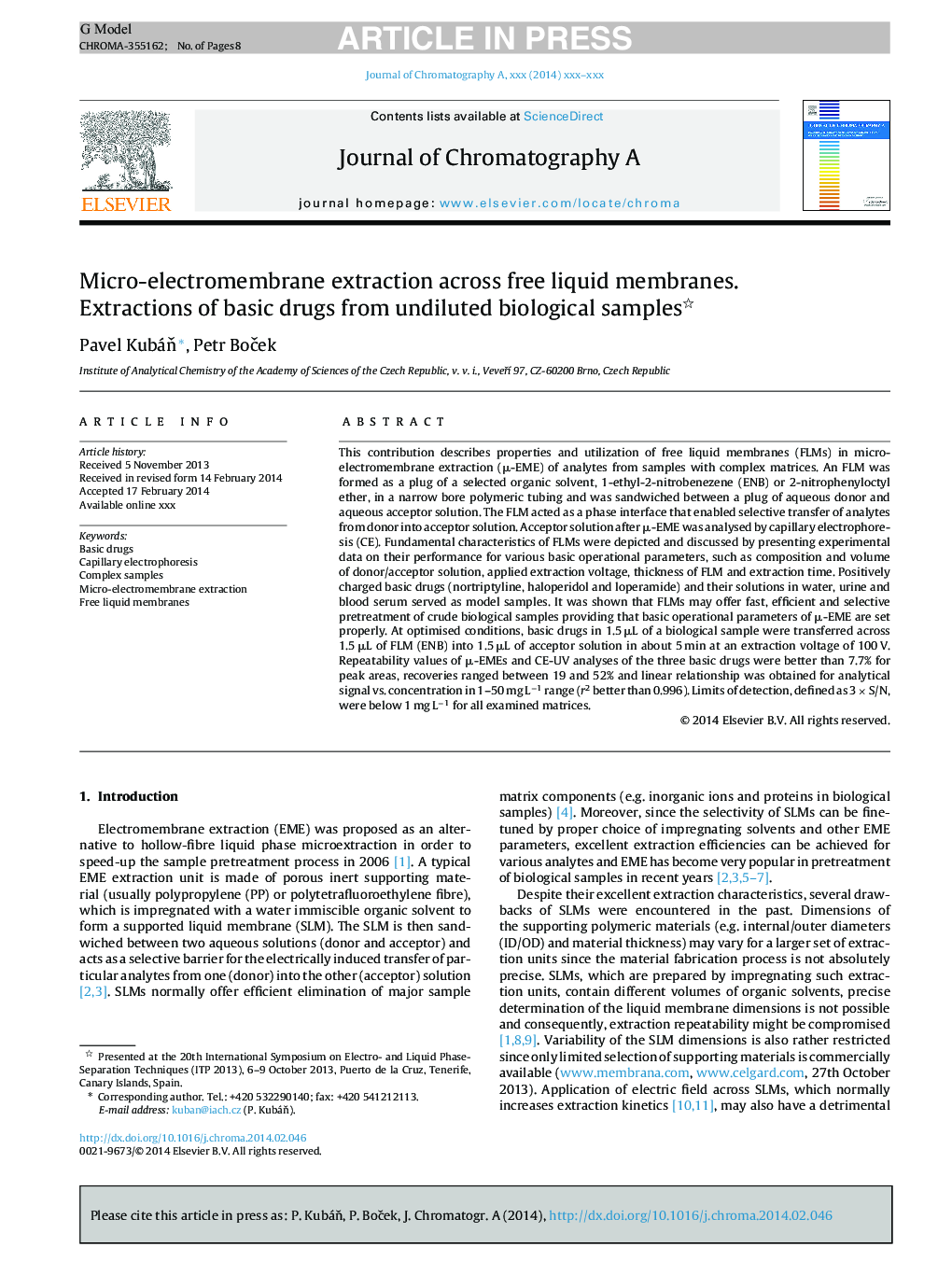| Article ID | Journal | Published Year | Pages | File Type |
|---|---|---|---|---|
| 7613504 | Journal of Chromatography A | 2014 | 8 Pages |
Abstract
This contribution describes properties and utilization of free liquid membranes (FLMs) in micro-electromembrane extraction (μ-EME) of analytes from samples with complex matrices. An FLM was formed as a plug of a selected organic solvent, 1-ethyl-2-nitrobenezene (ENB) or 2-nitrophenyloctyl ether, in a narrow bore polymeric tubing and was sandwiched between a plug of aqueous donor and aqueous acceptor solution. The FLM acted as a phase interface that enabled selective transfer of analytes from donor into acceptor solution. Acceptor solution after μ-EME was analysed by capillary electrophoresis (CE). Fundamental characteristics of FLMs were depicted and discussed by presenting experimental data on their performance for various basic operational parameters, such as composition and volume of donor/acceptor solution, applied extraction voltage, thickness of FLM and extraction time. Positively charged basic drugs (nortriptyline, haloperidol and loperamide) and their solutions in water, urine and blood serum served as model samples. It was shown that FLMs may offer fast, efficient and selective pretreatment of crude biological samples providing that basic operational parameters of μ-EME are set properly. At optimised conditions, basic drugs in 1.5 μL of a biological sample were transferred across 1.5 μL of FLM (ENB) into 1.5 μL of acceptor solution in about 5 min at an extraction voltage of 100 V. Repeatability values of μ-EMEs and CE-UV analyses of the three basic drugs were better than 7.7% for peak areas, recoveries ranged between 19 and 52% and linear relationship was obtained for analytical signal vs. concentration in 1-50 mg Lâ1 range (r2 better than 0.996). Limits of detection, defined as 3 Ã S/N, were below 1 mg Lâ1 for all examined matrices.
Keywords
Related Topics
Physical Sciences and Engineering
Chemistry
Analytical Chemistry
Authors
Pavel KubáÅ, Petr BoÄek,
